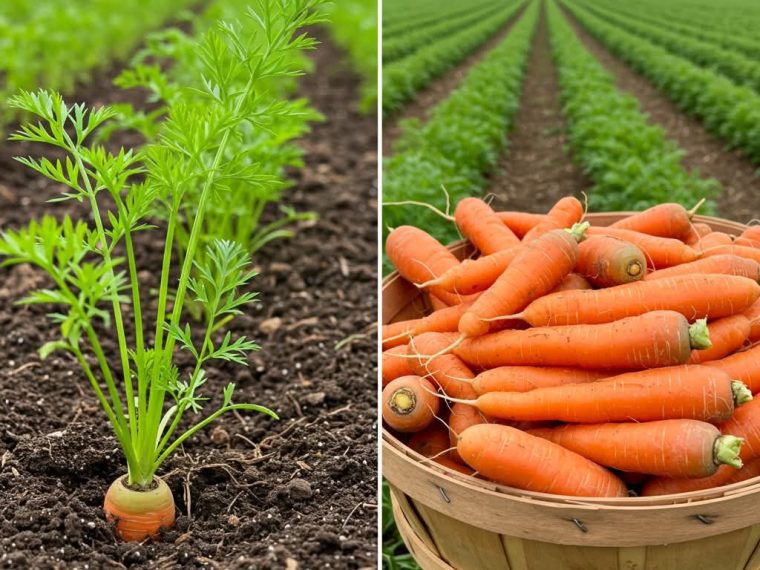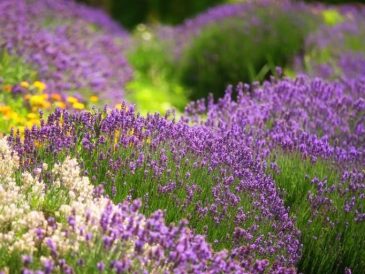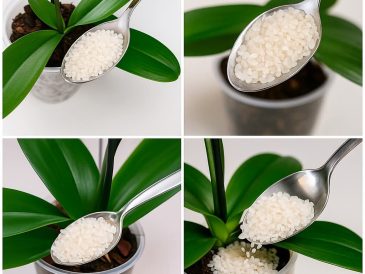When you think of carrots, you probably imagine the crunchy orange root used in salads and soups. But did you know that carrots can also produce beautiful, lacy blooms that add a whimsical, wildflower-like charm to any garden? These blooms, which appear when the plant is allowed to bolt (flower), resemble Queen Anne’s lace and can bring delicate beauty to borders, pollinator gardens, and ornamental beds.
Whether you’re growing carrots for food, flowers, or both, cultivating them year-round is entirely possible with the right planning and care. Here’s how to grow carrots not only for their edible roots but also for their surprising ornamental value—no advanced gardening skills required.
Why Let Carrots Bloom?
While most gardeners grow carrots for their roots, allowing a few to flower reveals their full life cycle and showcases their floral potential. Carrot blooms:
- Resemble decorative wildflowers
- Attract pollinators like bees and butterflies
- Can be cut for delicate floral arrangements
- Provide seeds for next year’s planting
These feathery white umbels are not only eye-catching but also useful in naturalizing a space or filling in gaps in your garden with gentle, cloud-like texture.
Choosing the Right Carrots
All carrot varieties can eventually bloom, but heirloom and open-pollinated types are best for growing blooms, as they produce viable seeds and attractive flowers. Some popular choices include:
- Danvers – A classic heirloom known for reliability
- Parisian – A small, round variety that bolts easily
- Cosmic Purple – For those wanting vibrant roots and flowers
Avoid hybrid varieties if your goal is to save seeds or ensure floral consistency.
Preparing the Soil
Carrots thrive in loose, well-draining soil free of rocks and clumps. To encourage both healthy roots and tall flowering stems, invest in good soil preparation.
Steps to prep:
- Choose a sunny location with at least 6 hours of direct light daily.
- Loosen the soil to a depth of 10–12 inches.
- Mix in compost or well-rotted manure to improve fertility.
- Avoid nitrogen-rich fertilizers that promote foliage over roots and flowers.
Raised beds and deep containers work well, especially in small spaces or urban gardens.
Planting Carrots for Continuous Growth
To enjoy blooms (and roots) year-round, stagger your planting. Carrots are cool-season crops that can tolerate light frost, making them ideal for succession sowing.
Sowing tips:
- Sow seeds directly into the soil; carrots dislike transplanting.
- Plant in rows or clusters, spacing seeds 1–2 inches apart.
- Thin seedlings to allow 2–3 inches of space between plants.
- Water gently and keep the soil evenly moist during germination.
For continual harvest and blooming, sow new seeds every 3–4 weeks.
Encouraging Flowering
Carrots are biennials, meaning they usually flower in their second year after experiencing cold weather. However, if you want to see blooms sooner:
- Allow some plants to overwinter in the ground and bloom the following spring.
- Expose young plants to a brief chill (vernalization), which may trigger early flowering.
- Choose fast-growing varieties that bolt more quickly.
Don’t harvest the root if you’re growing the plant for flowers—allow it to remain in the ground and develop its natural flowering cycle.
Caring for Carrot Plants
Carrots are relatively low-maintenance. For both edible and ornamental success:
- Water consistently to keep the soil slightly moist.
- Mulch around plants to retain moisture and reduce weeds.
- Avoid over-fertilizing; too much nitrogen can lead to lush foliage at the expense of roots and flowers.
Remove any plants that look weak or diseased to avoid affecting the rest of your garden.
Harvesting Flowers and Seeds
Once carrot plants flower, you can enjoy the blooms for weeks. Cut flowers for vases when the umbel is fully open but before seeds develop. For seed saving:
- Let flowers mature fully and dry on the plant.
- Harvest when the flower head turns brown and dry.
- Shake or rub seeds into a paper bag and store in a cool, dry place.
These seeds can be replanted or shared with other gardening enthusiasts.
Growing Carrots Indoors or in Containers
If you’re short on outdoor space, carrots can also bloom in containers placed on sunny balconies or windowsills. Use deep pots (at least 10 inches) and follow the same planting guidelines. Container-grown carrots may not grow as large, but they can still produce charming flowers if allowed to bolt.
Year-Round Tips
- In mild climates, plant in fall for winter root harvest and spring blooms.
- In cold climates, cover overwintering plants with mulch or row covers.
- Indoors, simulate cold exposure by chilling potted carrot plants in a cool spot for a few weeks.
Conclusion
Growing carrots for blooms is a delightful and unexpected twist on traditional vegetable gardening. With staggered planting, a little patience, and minimal care, you can enjoy both edible roots and feathery floral displays throughout the year. Whether you’re filling your salad bowl or your vase, carrots prove to be one of the most versatile and rewarding plants to grow—no matter your gardening experience.



